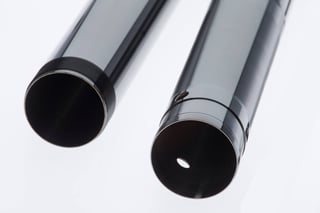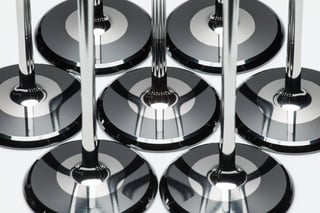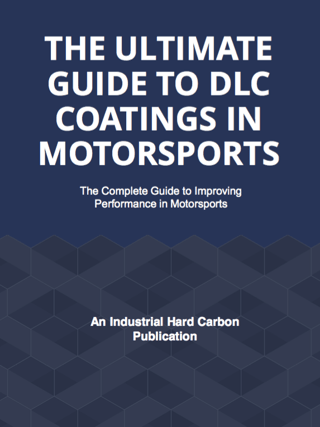When it comes to all the different kinds of thin film coatings on the market, they are not all created equal. Some coatings offer lower friction, while others offer increased wear resistance or temperature resistance.
Finding a coating that can withstand all the elements that comes with motorsports - extreme temperatures, increased wear-and-tear, friction, extreme abrasion, and more - has been proven to be extremely difficult. Fortunately, DLC, or diamond-like carbon coating, has a proven track record of standing up to the punishment of long races and extreme elements in order to help engines perform at optimum levels.
How? Well, here are three (of many!) reasons why DLCs are so effective in motorsports.
1. DLC is Created from Layers of Nano-Crystalline Diamond & Nano-Crystalline Silicon Carbide
 Diamond-like carbon coatings is an amorphous matrix of nano-crystalline diamond and nano-crystalline silicon carbide, and can be applied to a part in layers to create optimum thickness. It’s the unique combination of these elements that give DLCs it’s wide range of properties - and extremes in those properties.
Diamond-like carbon coatings is an amorphous matrix of nano-crystalline diamond and nano-crystalline silicon carbide, and can be applied to a part in layers to create optimum thickness. It’s the unique combination of these elements that give DLCs it’s wide range of properties - and extremes in those properties.
In fact, the qualities of DLC can only be surpassed by pure diamond!
2. Diamond-Like Carbon Coating Holds Unique Characteristics
With repeated high temperature excursions, high sliding velocities, and high contact stresses, motorsports require exceptionally high performing coatings. Unfortunately, ceramics and other carbon-based protective coatings just can’t meet the challenge.
DLC is known for its extreme hardness, flexural strength, high lubricity, low friction coefficient, extreme wear rate, thermal conductivity, and extreme operating temperatures. Unlike thin films based on ceramic formulas, DLCs are not brittle and do not chip from sharp cutting edges.
Take a look at IHC’s properties here>>
3. There are Unlimited Parts that can be Coated for Enhanced Performance
 Because DLCs are applied through the use of an advanced plasma technology, it can be applied to the most intricate or substantial parts in the engine and all areas are coated evenly. The most valuable applications are in the engine, valvetrain and drivetrain.
Because DLCs are applied through the use of an advanced plasma technology, it can be applied to the most intricate or substantial parts in the engine and all areas are coated evenly. The most valuable applications are in the engine, valvetrain and drivetrain.
DLCs are commonly applied to parts of the engine such as the piston, piston ring, connecting rod, and crank shaft. Within the valvetrain, you can often find DLC on the intake valve, the exhaust valve, the valve retainer, the rocker arm, the rocker shaft, the valve lifter, the push rod, and the cam shaft. DLC is often applied within the drivetrain to the shift lever, the shift fork and the synchronizer ring. However, there are unlimited applications.
Download the Full eBook to Learn More!
 Even a minor drag between sliding surfaces can result in a significant hit to engine performance, and this is why DLC coatings are used to prevent sticking, eliminate galling and maintain tight dimensions during long races.
Even a minor drag between sliding surfaces can result in a significant hit to engine performance, and this is why DLC coatings are used to prevent sticking, eliminate galling and maintain tight dimensions during long races.
Download IHC’s free eBook, The Ultimate Guide to DLC Coatings in Motorsports: the Complete Guide to Improving Performance in Motorsports, for additional information on DLC uses, properties, and more.


